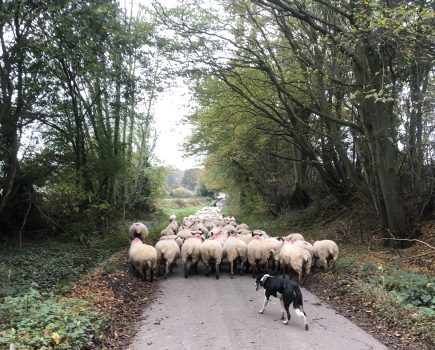It is part of my family’s farming folklore that my great-grandfather once joked that he was “going to make beans cheap” by planting a big acreage of them one spring in the late 1890s when the price for the crop was high. Sadly, his prediction of disaster came true and he ended up selling the crop at very low prices when he and many other farmers – similarly tempted to grow them – flooded the market with beans the following autumn.
I’m growing spring beans this year for only the second time in my farming career, tempted not just by high prices but also by not needing to buy AN at £1,000 per tonne. The first attempt to grow them, nearly 30 years ago, was such an unmitigated disaster that it has taken me all this time to pluck up the courage to give it another go.
That early ham-fisted effort involved using a Massey 30-disc drill to sow the beans straight into ploughed ground but, despite setting the drill to ‘maximum depth’, my local rook population soon delighted in showing me that this was not nearly deep enough. From the day the beans were sown, right through the early stages of germination, they dug up the beans with glee, leaving large parts of the field almost bare of crop.
Remembering that nightmare like it was yesterday, this time I invited a contractor to sow the beans with an Arnold Schwarzenegger of drills called a ‘Claydon’. This bright yellow monster had so many tyres, spring tines and discs that I actually felt sorry for any rook that might try to dig up a bean after that beast had finished burying it.
And so it proved. After an initial investigation of the freshly sown fields, and trying their luck with some distinctly half-hearted excavations, they retired to their rookery cawing their grumbles. (According to a Europe-wide survey by Birdlife International, the rook population is in such rapid decline that it is now considered ‘vulnerable’, despite being a bird species of least concern as recently as 2015. Nuisance as these birds can be to arable farmers at certain times of year, I would miss these noisy, fractious, intelligent avians terribly if they were to disappear from my farm).
If the successful establishment of a spring bean crop is a first for me, so is the fact that I didn’t plough the land before sowing the crop. This first tentative step into min-till rather late in my arable farming career has shown me the attractions of not ploughing. Speed, lower carbon emissions, reduced cultivation costs and better soil moisture conservation are all obvious short-term benefits. I can also see that improved soil structure and increased organic content must also be advantages.
That said, despite the beans not being sown until late March, there has been a worrying late germination of blackgrass, which I have only been partially successful in suppressing with a herbicide. So I very much doubt whether I’ll have the courage not to plough this autumn and bury the offending seed out of sight.
At the time of writing, spot bean prices are still hovering around a very encouraging £330 per tonne, so I have plenty of financial incentive to keep an eagle eye out for any potential fungal or insect pest threat to the crop. Fingers crossed then that there are not too many other farmers out there with similarly promising looking crops about to make beans cheap again.







